Search results for: 'Bronze plate'
-
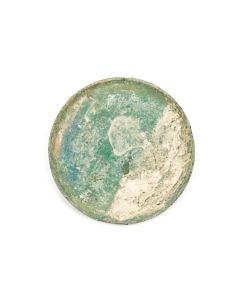 Roman mirror from Baalbek
Roman mirror from BaalbekThe bronze disc is the base plate of a bronze mirror, that was once attached to a handle and coated with a reflective metal layer. Typical for upper class Roman households during Imperial times.
Price: on request Roman mirror from Baalbek
Roman mirror from BaalbekThe bronze disc is the base plate of a bronze mirror, that was once attached to a handle and coated with a reflective metal layer. Typical for upper class Roman households during Imperial times.
Price: on request Kusura-type idol from 3rd millenium BC Anatolia examined by Prof. Lambert
Kusura-type idol from 3rd millenium BC Anatolia examined by Prof. LambertIdol aus weißem, feinkristallinem Marmor vom sogenannten Kusura-Typus. Aus der Bronzezeit Anatoliens, 3. Jt. v. Chr. Begutachtet durch Professor W. G. Lambert. Museumswürdig.
Price: on request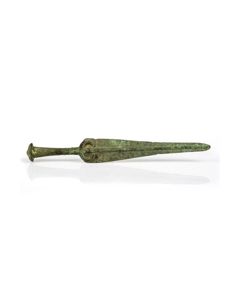 Luristan bronze dagger with crescent decoration
Luristan bronze dagger with crescent decorationBronze weapon originating from the Luristan region during Iron Age. With nicely decorated and sturdy blade.
€1,700 Near Eastern bronze idol
Near Eastern bronze idolThe unusual bronze figurine is a Near Eastern idol. Possibly a god or priest. 2nd Millenium BC.
Price: on request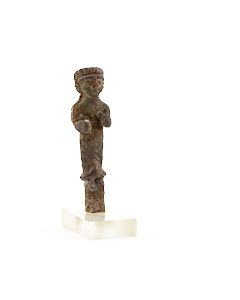 Canaanite bronze figurine
Canaanite bronze figurineThe small figure was once silver plated and was made in biblical times in the Land of Canaan. It might depict a charioteer.
Price: on request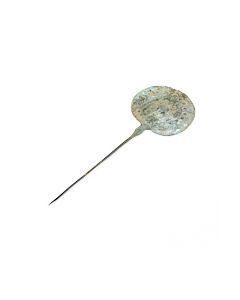 Disc-headed pin from Luristan
Disc-headed pin from LuristanImportant and unique pin type from Iron Age Luristan. Nice specimen with concentrical decoration.
Price: on request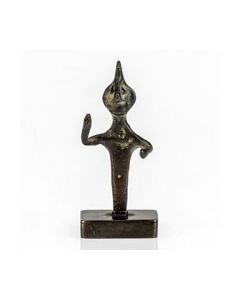 Anatolian bronze idol
Anatolian bronze idolThe bronze figurine is a nail idol that can be attributed to the Hittite culture. Late 2nd Millenium BC.
Price: on request Luristan battle axe with eyes
Luristan battle axe with eyesAxe head originating from the Luristan region during Early Bronze Age. The piece is decorated with eyes to form a stylized bird's head.
€740 Luristan bronze dagger with crescent decoration
Luristan bronze dagger with crescent decorationBronze weapon originating from the Luristan region during Iron Age. A beautiful crescent decorates both sides of the blade.
Price: on request Luristan bronze dagger with grip insert
Luristan bronze dagger with grip insertBronze weapon originating from the Luristan region during Iron Age. Note the grip insert in this dagger otherwise comprised of a single piece of bronze.
Price: on request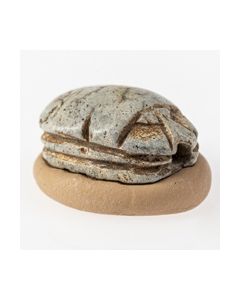 Canaanite scarab
Canaanite scarabLocal levantine production during the 13th to 15th dynasty of Egypt. With an export permit from the Israel Antiquities Authority.
Price: on request Mummyform Near Eastern idol
Mummyform Near Eastern idolThe unusual bronze figurine is an idol from Anatolia or the Near East. Around 1000 BC.
Price: on request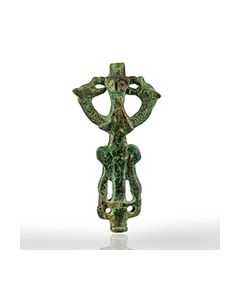 Luristan bronze standard with master of animals
Luristan bronze standard with master of animalsBronze finial from Iron Age Northern Iran. Decorated by stylized panthers and a janus headed hero or god. Possibly a teraphim, a house god, as referred to in the Old Testament.
€1,875 Luristan bronze dagger with grip insert
Luristan bronze dagger with grip insertBronze weapon originating from the Luristan region during Iron Age. Note the grip insert in this dagger otherwise comprised of a single piece of bronze.
Price: on request Luristan bronze dagger
Luristan bronze daggerIron Age bronze weapon originating from the Luristan region in Ancient Iran. Well preserved.
€1,150 Horse bit from Luristan
Horse bit from LuristanDelightful artefact attesting the dawn of horse breeding in Western Iran during the 8th century BC. Figural decorations form the cheek pieces.
€1,800 Dipper juglet from the Holy Land
Dipper juglet from the Holy LandPottery of daily life from biblical times, made around 700 BC. The piece was found in Hebron, a city with considerable historical importance.
Price: on request Luristan bronze dagger
Luristan bronze daggerIron Age bronze weapon originating from the Luristan region in Ancient Iran. Well preserved.
€1,250 Dipper juglet from the Holy Land
Dipper juglet from the Holy LandPottery of daily life from biblical times, made around 700 BC. The piece was found in Hebron, a city with considerable historical importance.
Price: on request Small Phrygian gold fibula
Small Phrygian gold fibulaThe richly decorated brooch is a wonderful miniature work of art. It is from the 8th or 7th century BC, when the empire of the Phrygans was at its height. The time when the legends around King Midas spawned.
€1,900 Horse bit from Luristan
Horse bit from LuristanDelightful artefact attesting the dawn of horse breeding in Western Iran during the 8th century BC. Highly stylized horses form the cheek pieces.
€2,840 Luristan bronze standard with ibexes
Luristan bronze standard with ibexesBronze standard with stand from Iron Age Northern Iran. Decorated by a pair of ibexes. Possibly a teraphim, a house god, as referred to in the Old Testament.
€840 Phrygian fibula from the Hattatt collection
Phrygian fibula from the Hattatt collectionBronze fibula from Anatolia around the time of King Midas. The piece is published in two standard works and was on loan to the Ashmolean Museum.
Price: on request

